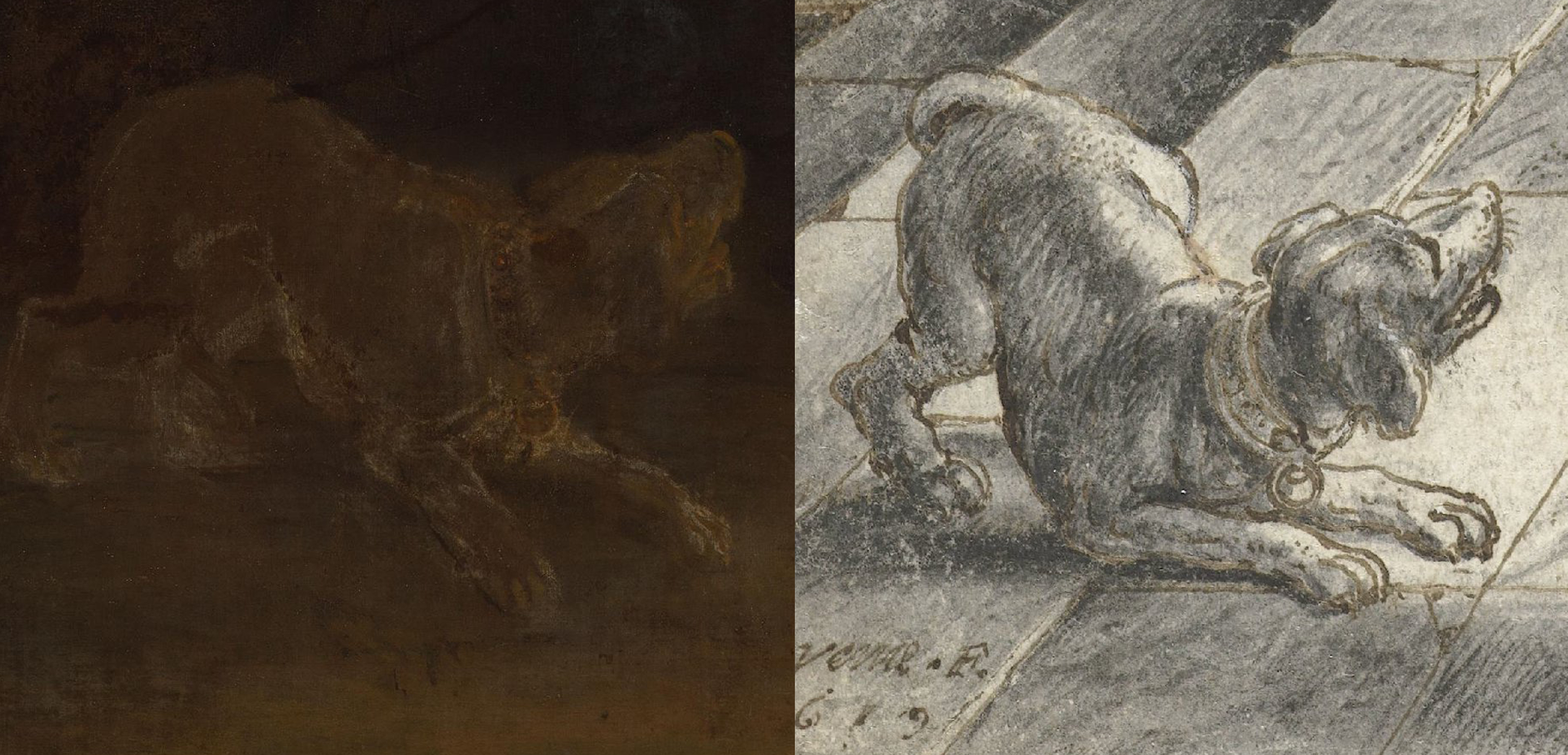Dogged detective work identifies shady figure in The Night Watch

A mystery at the centre of one of the world’s most iconic paintings may have been solved after a curator identified a dog in Rembrandt’s The Night Watch from a sketch by another artist.
Speculation has circulated for centuries about the blurry outline of a dog crouched by the feet of Captain Frans Banning Cocq, the central figure in the 1642 group portrait. Some art historians suggested the animal may have been Rembrandt’s own dog, drawn from life.
But curator Anne Lenders believes she has found the answer after stumbling on an almost identical sketch from 1619 by Adriaen van der Venne during an exhibition of the artist at the Zeeuws Museum in Middelburg.
“I was just walking around when my book fell on a book by Jacob Cats with a dog depicted on the title page,” she said.
“Immediately the Night Watch dog came to my mind. I wasn’t completely sure, so I grabbed my phone and searched for the Night Watch dog to compare it with Adriaen van der Venne’s dog, and then I saw that the similarities were striking.”
In both artworks, the dog is crouched on the ground with its head turned upwards and its mouth open. The size, shape of the head and proportions are also very similar, although some details differ: Rembrandt’s dog has its tail between its legs, while in Van der Venne’s sketch it is resting on its back.
Collar
But the clinching factor for Lenders was the dog’s collar, which in both cases is studded with a ring hanging down at the same angle.
“I was very surprised and many questions came up, like: ‘Am I really the first one to see this?’”
An examination of the underlying sketch using Macro XRF imaging shows that Rembrandt initially drew the dog leaning further forwards, which is closer to the position in Van der Venne’s sketch.
Lenders said it reinforced the conclusion that Rembrandt used the earlier sketch as a model for the dog in his own work, as was common for artists of the time.
“When we read Rembrandt’s inventory of 1656, we can see that he possessed an enormous collection of drawings and prints, which he actually used as a source of inspiration,” she said.
Dutch Smoushond
There is some dispute about what breed the dog is: some observers say it is a Dutch Smoushond, while others have suggested it could be a French Griffon Fauve de Bretagne. Both were used as hunting dogs at the time, but the Smoushond’s long paws and rough fur made it an ideal rat-catcher.
Maria van Gaalen of the Dutch Smoushond owners’ club, told Nieuwsuur: “At the time The Night Watch was painted they were used a lot in market squares in Amsterdam and Rotterdam to keep the rats and mice away.”
Caroline van Santen, curator of the Zeeuws Museum, said the discovery gave an insight into Rembrandt’s working methods. “It’s interesting to know that he was looking at a contemporary and was familiar with his work.”
Ironically, the sketch was on loan from the Rijksmuseum as part of the exhibition in Middleburg, where Van der Venne lived from 1608 until 1625. The artist died in The Hague in 1662, so he may have seen his dog in The Night Watch after it was hung in the dining hall of the Kloveniersdoelen shooting gallery in Amsterdam.
“They have thousands of drawings there, so the fact that the curator looked at our exhibition from a different perspective and recognised the dog is quite remarkable,” Van Santen said.
Thank you for donating to DutchNews.nl.
We could not provide the Dutch News service, and keep it free of charge, without the generous support of our readers. Your donations allow us to report on issues you tell us matter, and provide you with a summary of the most important Dutch news each day.
Make a donation